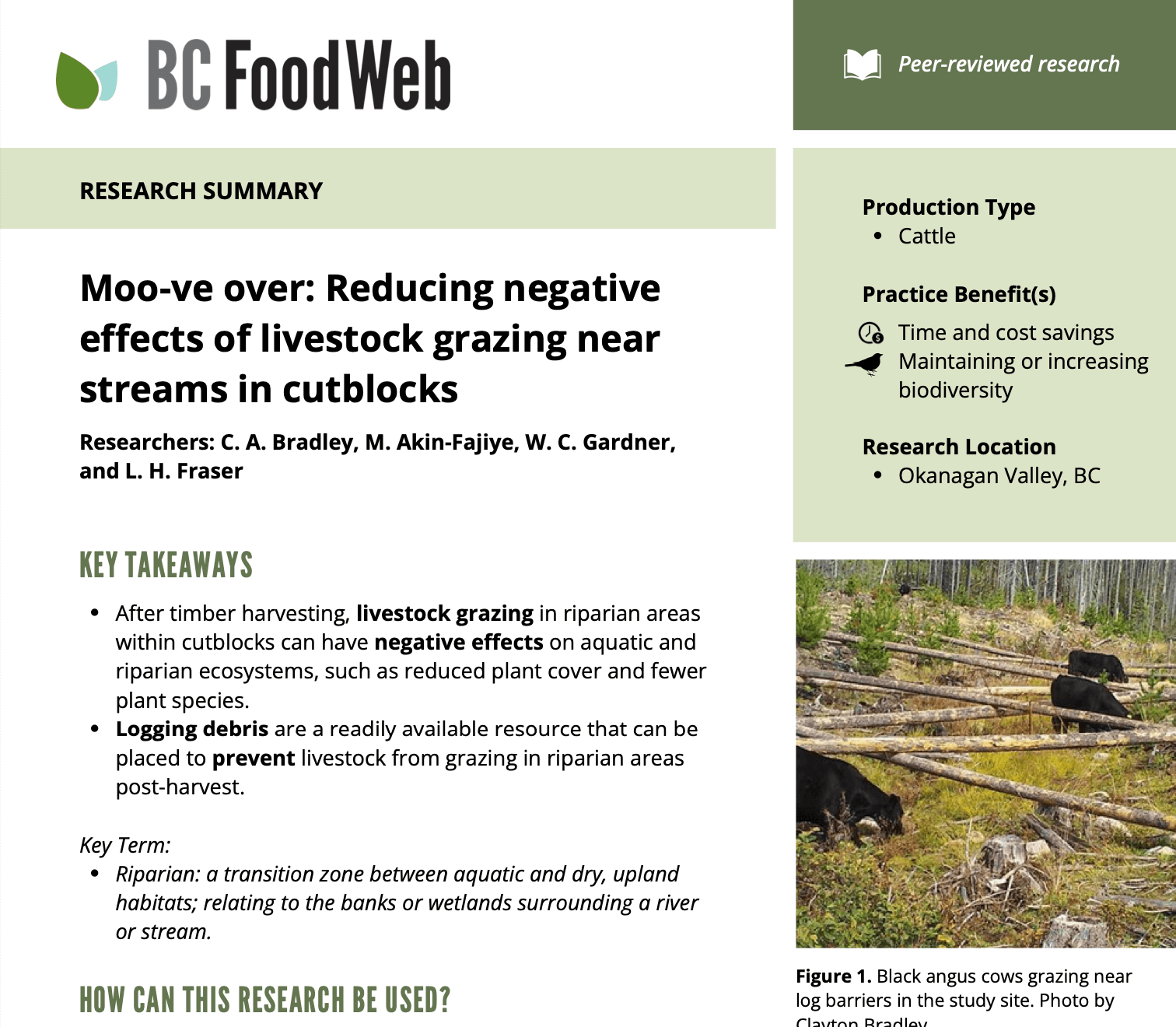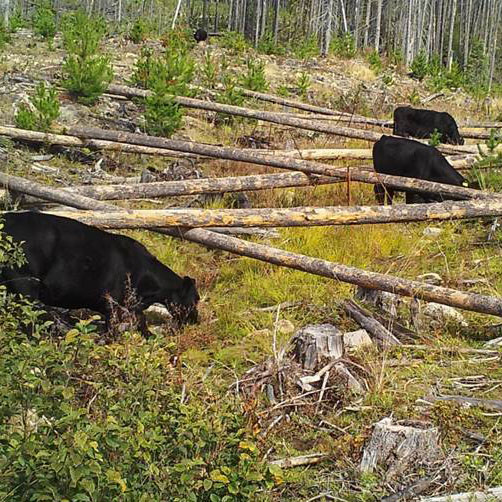Moo-ve over: Reducing negative effects of livestock grazing near streams in cutblocks
Introduction
This study looked at the use of logging debris as a deterrent for cattle grazing near waterways in order to reduce negative effects on plant biodiversity.
Riparian zones are important ecosystems that provide multiple benefits including moderating stream temperatures, providing shade for fish and the aquatic ecosystem, filtering pollutants, trapping sediment, and providing food for wildlife, fish, and other aquatic organisms.
About this Brief
This brief was prepared by Juliana Cao from the BC Food Web team with the help of Clayton Bradley and Lauchlan Fraser, and is based on the following scientific journal article:
Bradley, C. A., Akin-Fajiye, M, Gardner, W. C., & Fraser, L. H. (2022). Debris barriers reduce the effects of livestock grazing along streams after timber harvest. Rangeland Ecology & Management, 81, 1-8. https://doi.org/10.1016/j.rama.2021.11.002
Key Findings
- After timber harvesting, livestock grazing in riparian areas within cutblocks can have negative effects on aquatic and riparian ecosystems, such as reduced plant cover and fewer plant species.
- Logging debris are a readily available resource that can be placed to prevent livestock from grazing in riparian areas post-harvest.



